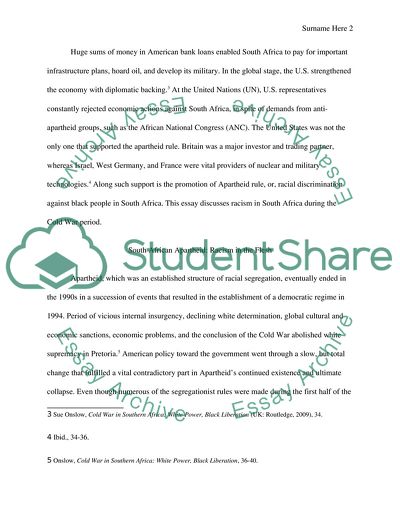Cite this document
(Racism in South Africa in the Cold War Era Essay Example | Topics and Well Written Essays - 2500 words, n.d.)
Racism in South Africa in the Cold War Era Essay Example | Topics and Well Written Essays - 2500 words. https://studentshare.org/sociology/1845953-racism-in-cold-war-era
Racism in South Africa in the Cold War Era Essay Example | Topics and Well Written Essays - 2500 words. https://studentshare.org/sociology/1845953-racism-in-cold-war-era
(Racism in South Africa in the Cold War Era Essay Example | Topics and Well Written Essays - 2500 Words)
Racism in South Africa in the Cold War Era Essay Example | Topics and Well Written Essays - 2500 Words. https://studentshare.org/sociology/1845953-racism-in-cold-war-era.
Racism in South Africa in the Cold War Era Essay Example | Topics and Well Written Essays - 2500 Words. https://studentshare.org/sociology/1845953-racism-in-cold-war-era.
“Racism in South Africa in the Cold War Era Essay Example | Topics and Well Written Essays - 2500 Words”. https://studentshare.org/sociology/1845953-racism-in-cold-war-era.


